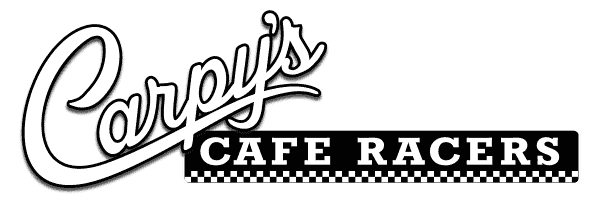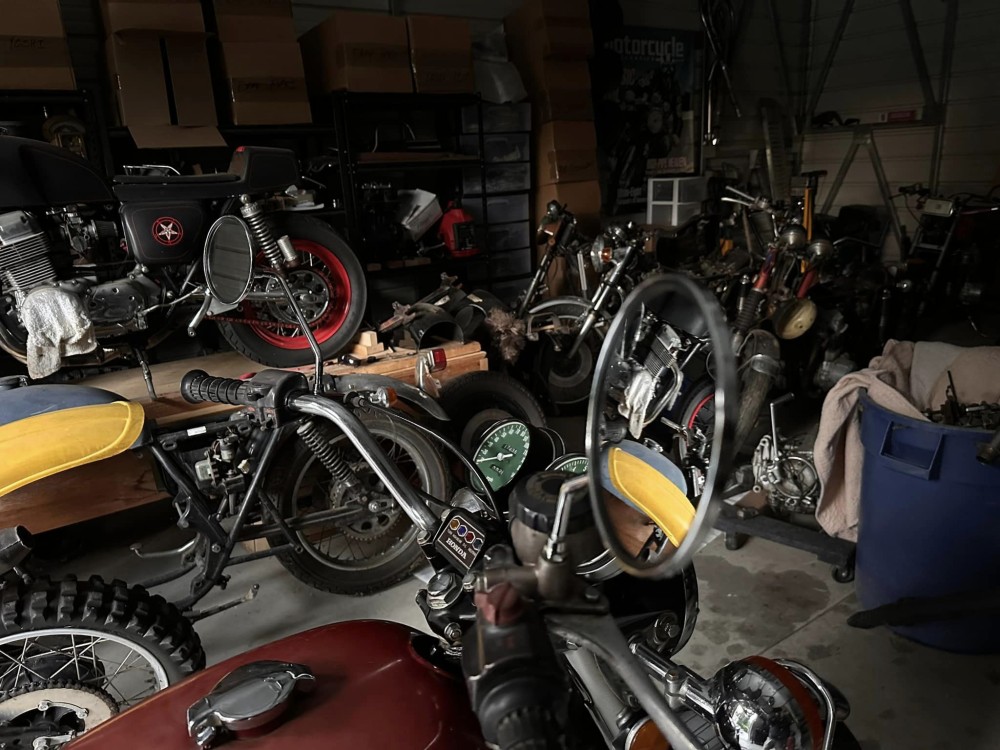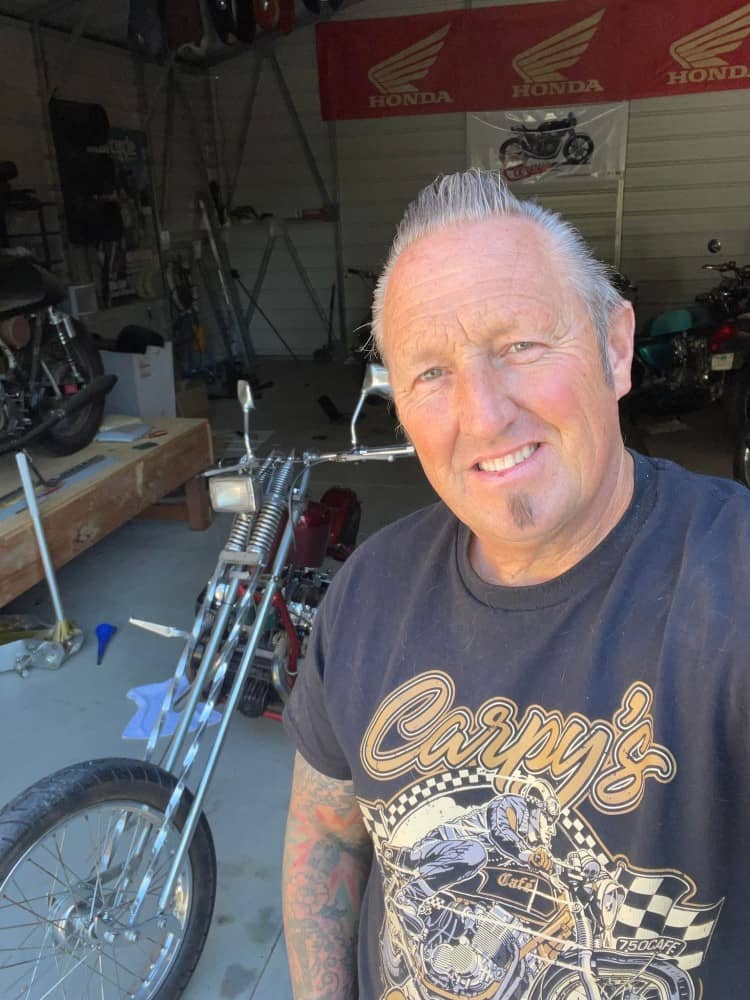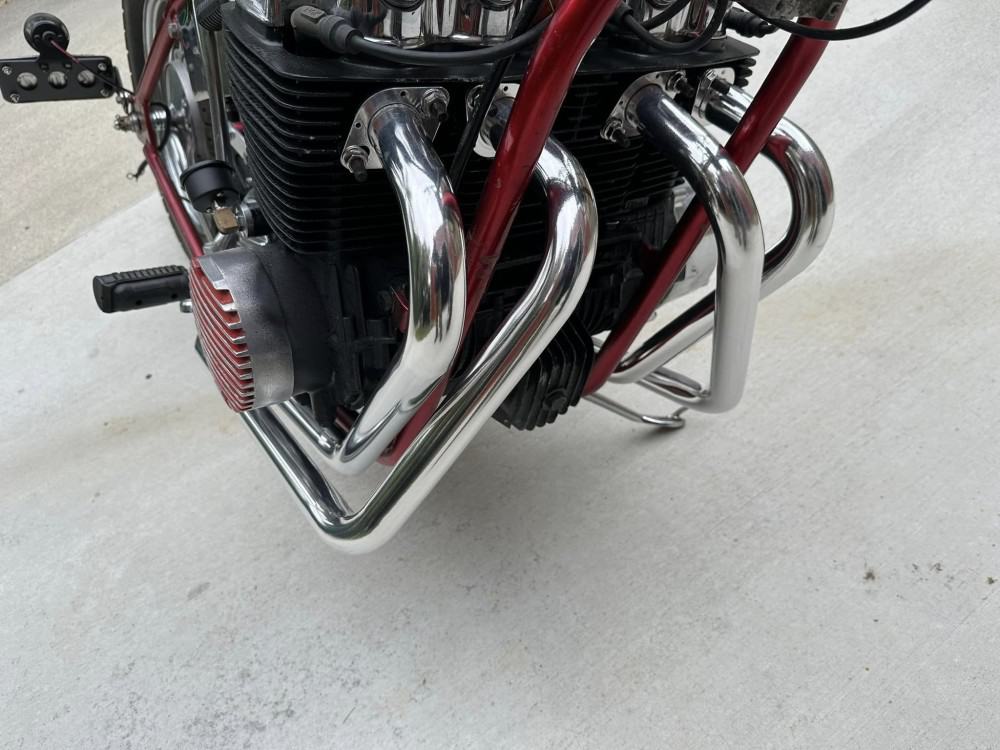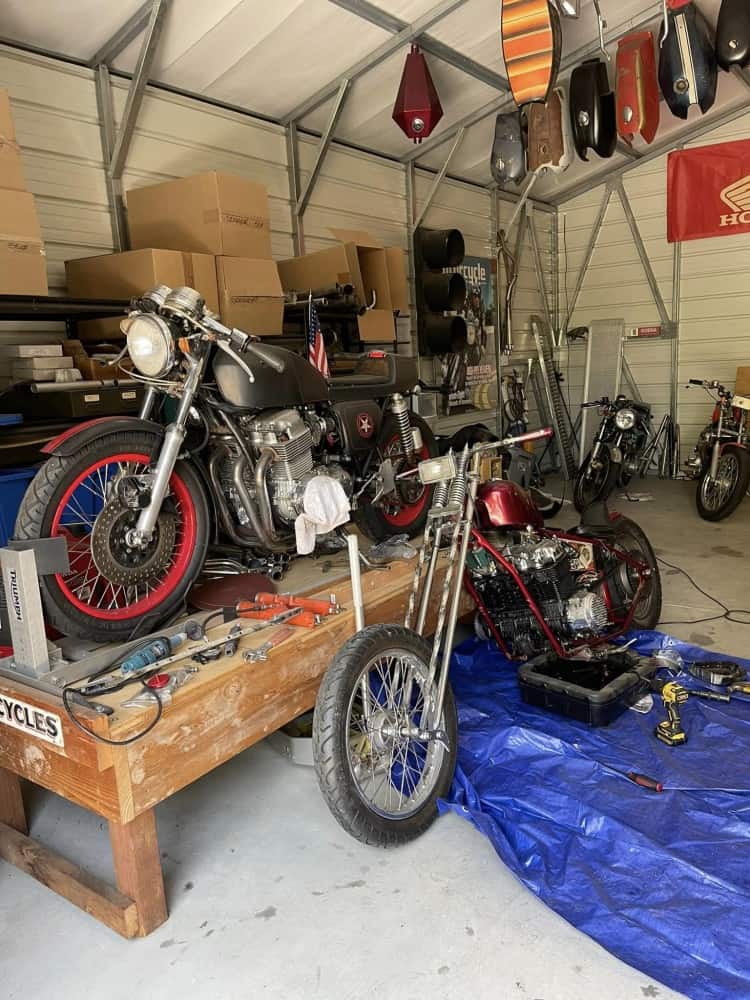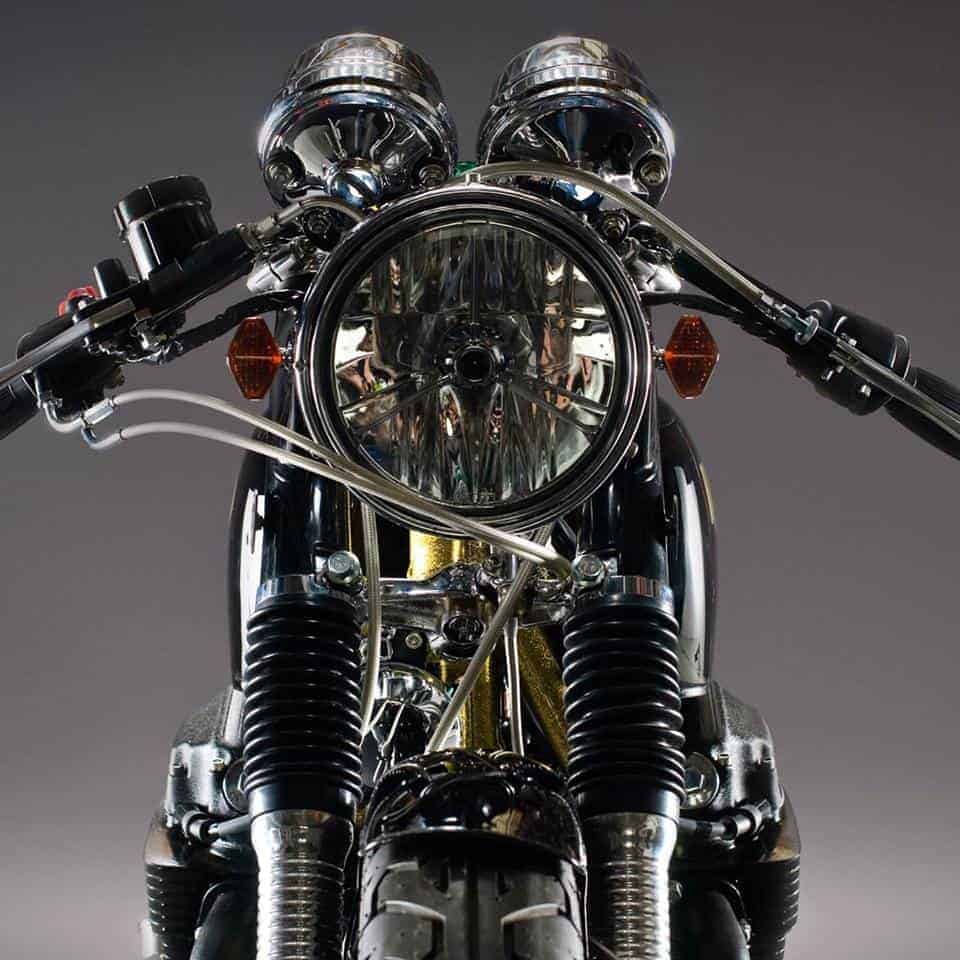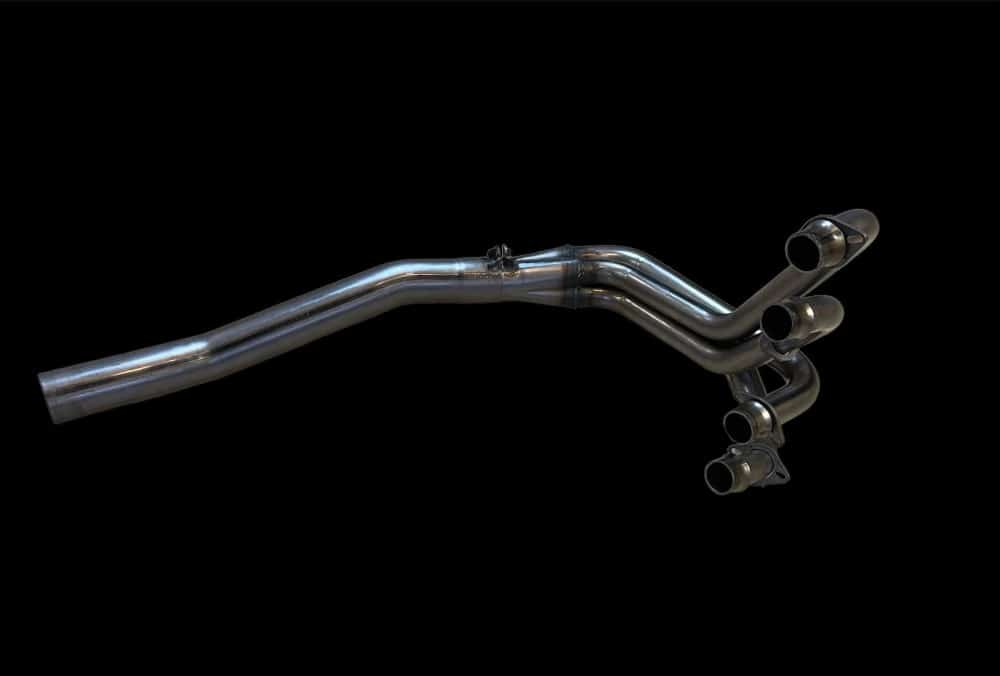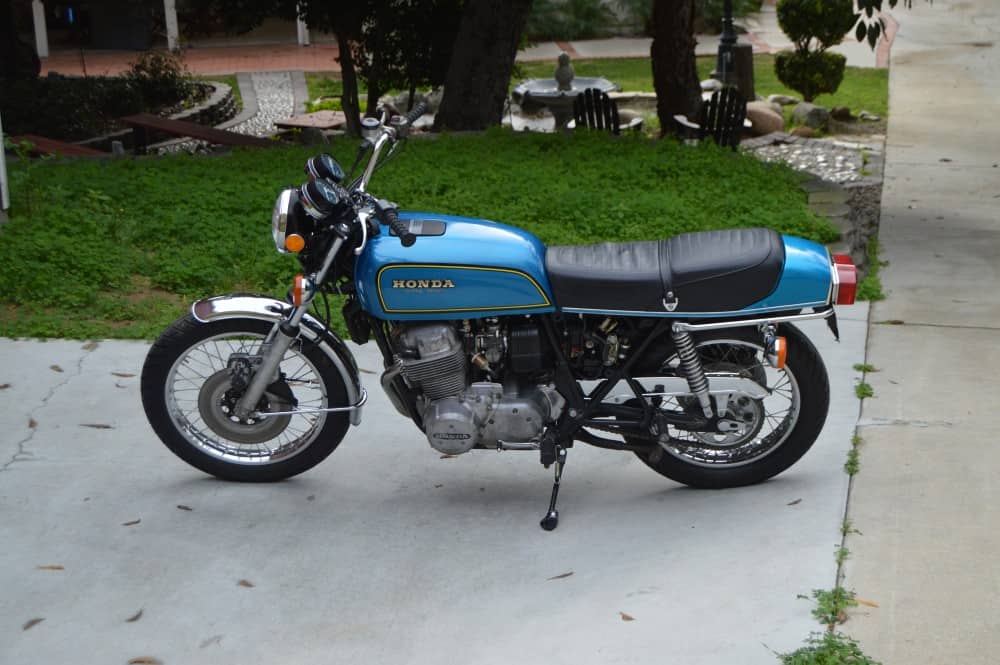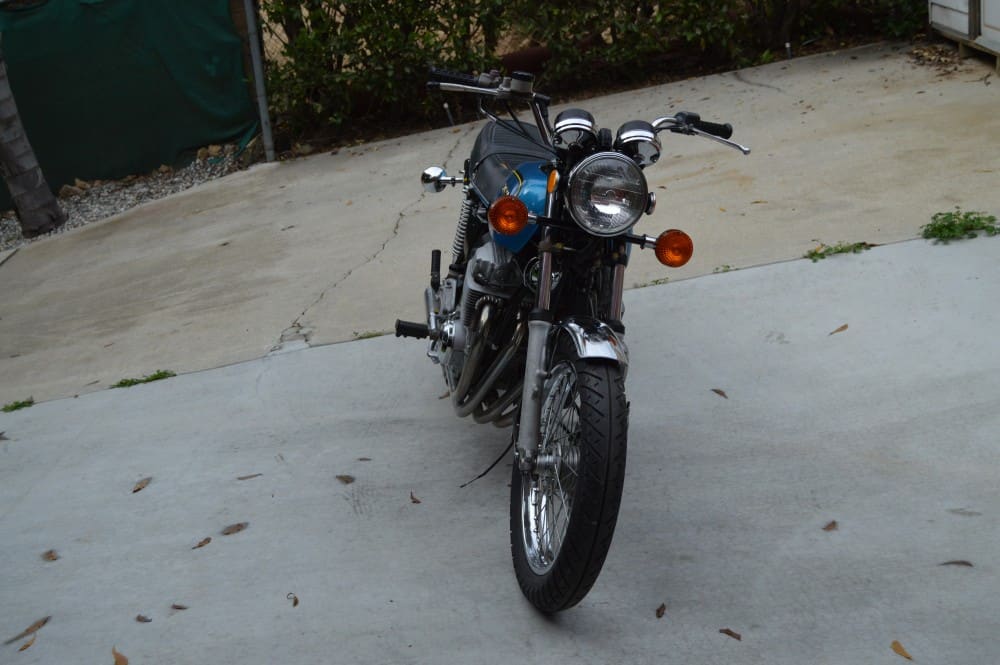I decided that whilst I have some spare time and a few parts etc I shall get into the K6 a little more and clean her up, as she has sat for so many years in a Back Garden, its only fair I revamp her a little and put her to a more Original style […]
Tag Archives: honda four
Well, the Californian Summer hung off for a while, but now it is in full swing and boy is it getting hard to work in stifling heat and humidity is up the ying yang right now, feels like I am in Florida to be honest, but the show must go on, I have so much […]
Busy day at home and more 4 into 1 Exhausts systems are now completed, I have been busy as of late and just about caught up with previous orders, I love making these and getting them sent to all over the world. These are the CB750 and Cb500-Cb550 Yoshi style systems, some of these will […]
Thought I would get a set of my ” El Diablo” Drag pipes Cerakote coated in Silver, they look like Polished Aluminum and the advantage of this is that they will not Blue like chrome does. I have always liked the way cerakoted exhaust look and stand out to any weather compared to chrome, I […]
As you may know, I picked up an old Santee framed Honda Chopper in a Local Garage a while back, progress has been slow as I am making parts for it to offer to the Chopper builders that are all around the globe, but i noticed that the engine case covers were looking bad. The […]
Every Motorcycle that I have built from the ground up is always tough to let it go, but- that’s what I do, create and build motorcycles as well as parts etc, this was fun creation that I put together for a Girl out in Australia, she wanted it gold flake and I did my very […]
I have been getting a lot of compliments on the 4 into 1 Exhaust I manufacture called The Sidewinder, this really is a great performing system that not only fits well, it sounds crisp and is a true Performance pipe. These power houses are available in Raw steel, for that Industrial Look, or you can […]
\Here at the shop I always have things to do, but I always help customers out and when he bought the 1976 CB750F here I could see it needed just a little tlc, many people think they will just need a charged battery and some new fuel and away they go? In some cases […]
I never know what may turn up at the workshop these days and this time I was surprised to unload a pretty clean 1975 Honda CB750F Super Sport , this has only 8000 miles on the odometer and is a one owner machine that a Customer just purchased locally and then bought it along to […]
Tick Tick Tick is all I can hear right now, but its all cool, I have managed to get my Customers parts in the mail to them and in time for the big day too. I thought this week I would add a video of stuff that interests me and this time it is an […]
